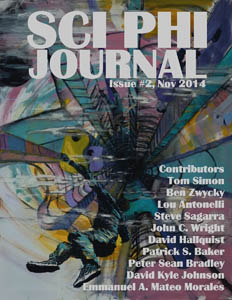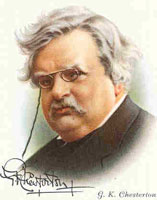Some months ago, I read a rather sad and disturbing piece about a professor of Creative Writing at an English university (not Oxbridge). This fellow opined that his discipline was basically useless, because while prose style could be taught and learnt, he did not believe that anybody could teach the idea of story.
I think it was Ursula K. LeGuin who said something rather similar, if less fatalistic, on the other side of the pond. She said that in working with young would-be writers, she found that while many of them had an excellent grasp of style and mechanics, not one in a hundred had a feel for story – what made a good one and how to construct it.
I find this very odd. Perhaps these modern and sophisticated people have not had the advantage of being mired in ignorance and tradition as children, as I had, or (a much better example) G. K. Chesterton. We were fairly steeped in stories when we were small, and nakedly unsophisticated stories, too. There are more lessons for fiction writers in ‘Jack and the Beanstalk’ or ‘The Three Billy Goats Gruff’ than on many a university campus. Since it seems unfair that wealth and education should be so unfairly disadvantaged, in comparison of poverty and stupidity, I shall offer to share my widow’s mite with the world.
A story (said I, in my most foolishly sententious tones) is a machine for communicating What Happens Next. A successful story is one which makes the reader, listener, or viewer care What Happens Next, and stick around with bated breath awaiting the outcome.
To demonstrate these propositions, I enlist the help of that celebrated storyteller, Kermit the Frog:
Here we see all the crucial elements of a good story in their most basic and unadorned form.
1. We have a character (Kermit) who wants to accomplish something, and is taking action to do so.
2. We have an expectation of how the thing is to be accomplished (the What Happens Next machine).
3. Things go wrong. What actually happens next is not what was supposed to happen next. Our character becomes unhappy and frustrated, but perseveres. We like and admire him for keeping on in the face of adversity. More to the point, if he gave up, he would never get to see What Happens Next, and neither would we.
It is important, at this stage, that what actually happens next should bear some kind of relevance to what we expected to happen. If it doesn’t, we have lost the thread of the story. To take an even simpler example than Kermit’s, we expect that two and two will make four; but even this can go wrong. It can go wrong in a way that naturally lends itself to a story: ‘Two plates and two plates only make three plates, because it was too many to carry and I broke one.’ It is the wrong answer, or an unexpected answer, but we can see how it is related to the expected one. Or it can go wrong in a way that is purely arbitrary, which is the death of story: ‘Two plates and two plates make – oh, look! Squirrel!’
Eschew the latter.
4. Eventually, we have a satisfying conclusion. Sometimes this will be what is called a Happy Ending. In this particular case, it is a tragedy with an O. Henry twist, as Kermit winds up losing his radio to the very machine he created to switch it on.
But there is no doubt that the story is concluded. The ‘slingshot ending’ beloved of modern littéraires, which leaves the outcome firmly in question, is a monkey trick, a piece of over-elaborate hackwork. It worked once – in ‘The Lady or the Tiger?’ – when the whole point of the story was to startle the reader with an intriguing novelty. It was never likely to work again, except on persons who had never seen the trick done the first time; for novelty was the only thing it had to offer. Sometimes the trick will work as a joke ending, if the setup has been sufficiently complicated to keep the audience from expecting it. The film Lock, Stock and Two Smoking Barrels had such an ending; but the ending was also a sight gag, and perfectly fitted the style and theme. It would have been disappointing to see the lead characters succeed, for they were bumbling fools who had never done anything right so far; it would have been heartbreaking to see them fail, for they were likeable bumbling fools. Better to go out with a laugh, by leaving them literally hanging in mid-air.
The art of storytelling, say I, can be divided into two parts. One is figuring out what actually happens next, and how it is in conflict with what was supposed or expected to happen. This is largely a matter of plotting; though it can be done in picaresques, and vignettes, and other plotless works – which is why story and plot are not the same thing. The second part is causing the audience to take a lively and abiding interest in finding out what happens next, so they will not put the book down, change the channel, or bury a battle-axe in the skald’s unworthy skull. That is a matter of Art, and too long for Kermit to go into.









Recent Comments